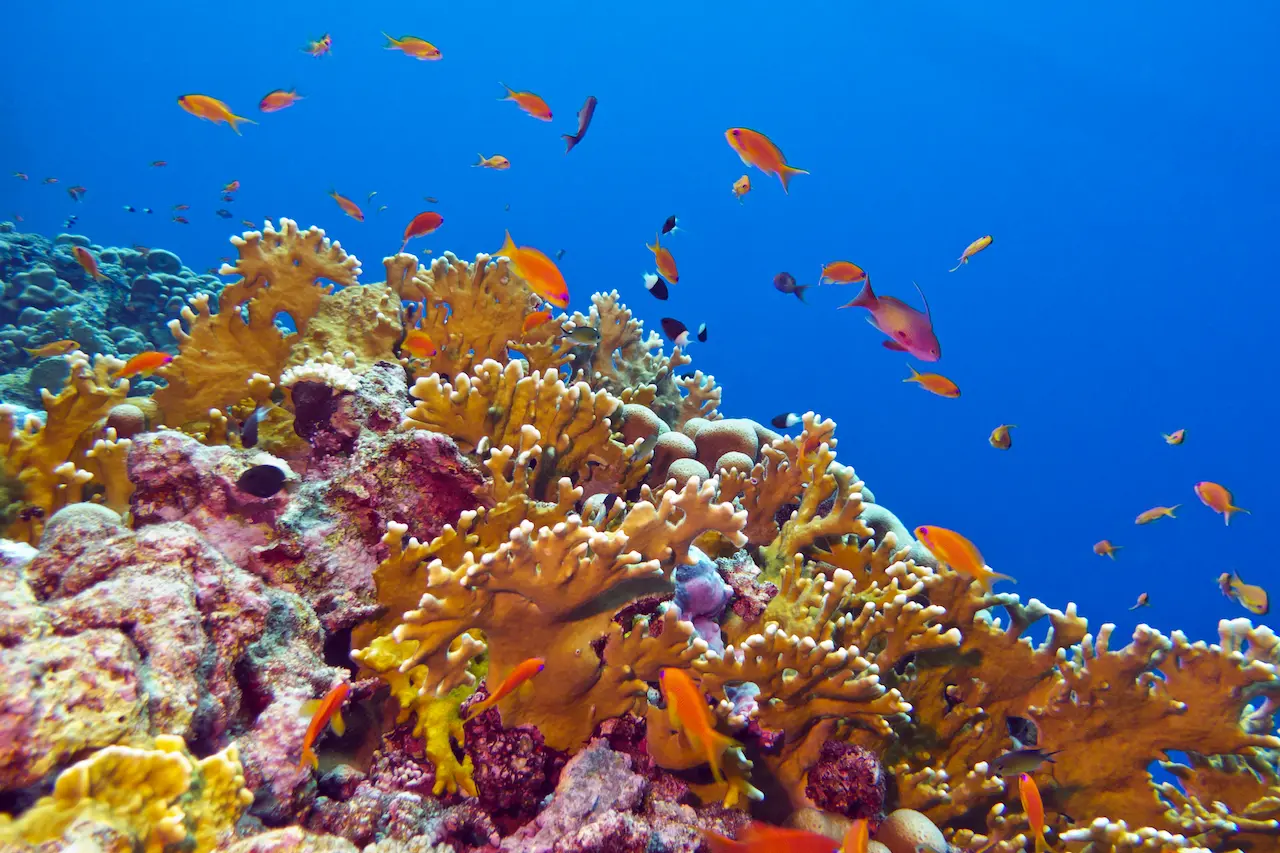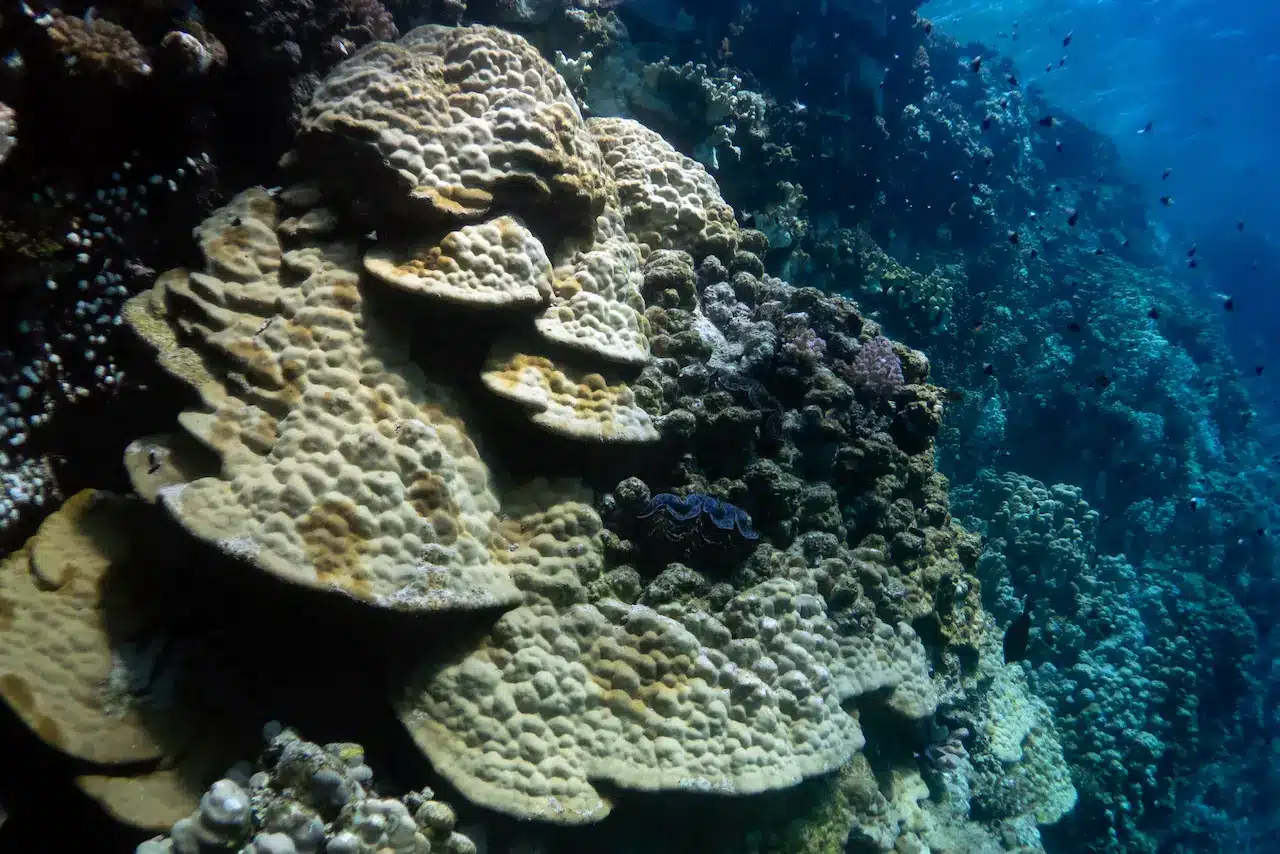Can You Create An Artificial Coral Reef? How?
Coral reefs are some of the most diverse and valuable ecosystems on Earth. They support over 25% of all marine life while covering less than 1% of the ocean floor. However, coral reefs worldwide are under threat from climate change, pollution, overfishing, and other human activities.
With natural coral reefs in decline, there has been growing interest in creating artificial reefs to replace lost habitat. But is it possible to build a functional, thriving coral reef?
Table of Contents
ToggleWhat Are Artificial Reefs?
An artificial reef is a man-made underwater structure, typically built to promote marine life in areas with a generally featureless bottom.
They are designed to mimic some of the characteristics of natural reefs, providing a hard surface where corals and other reef organisms can grow and seek shelter.
Artificial reefs have been created using a variety of materials over the years, including concrete, steel, tires, old vessels, and other waste materials.
While early artificial reefs tended to be makeshift assemblages of “materials of opportunity,” modern reef designs are engineered for stability, durability, and ecological benefit.
The main purposes of artificial reefs are:
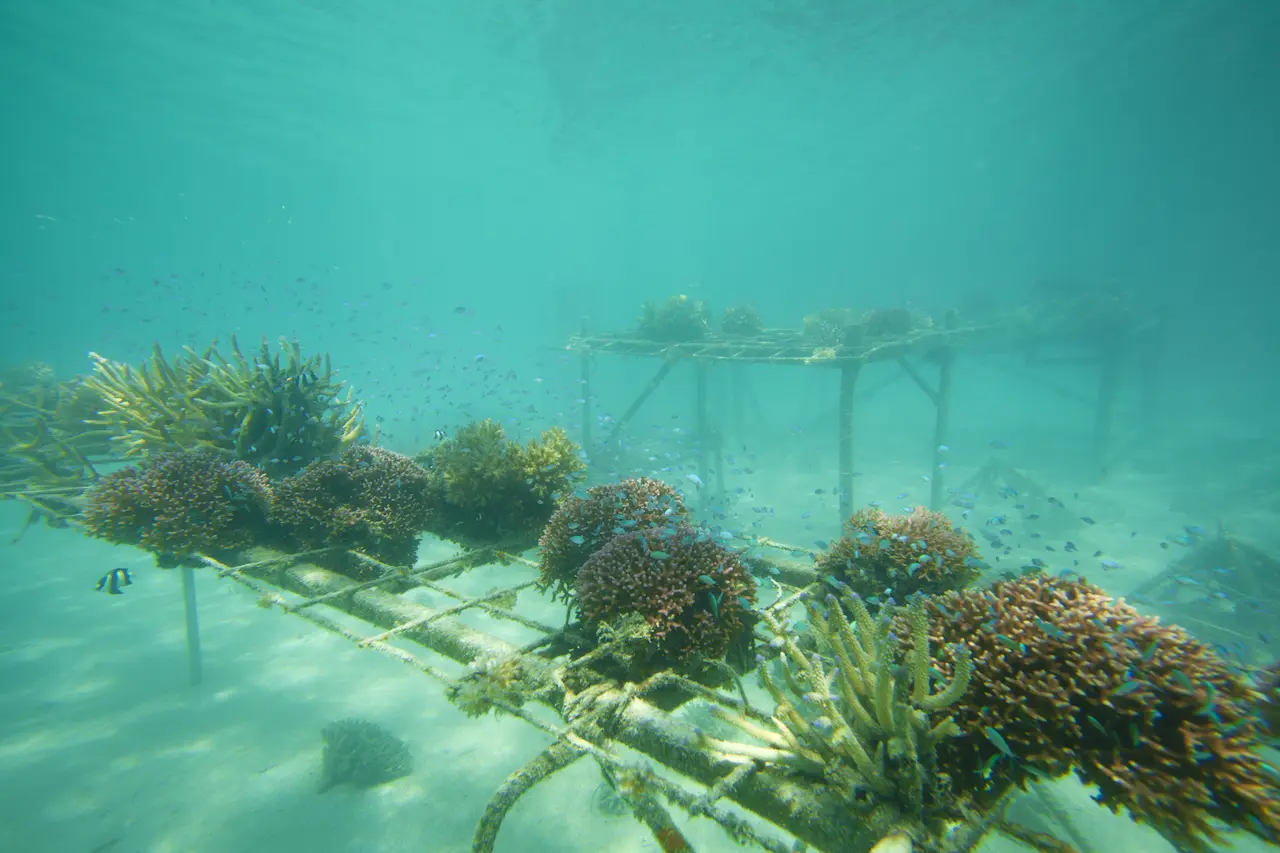
- To create new habitats for reef organisms to colonise and restore depleted marine ecosystems.
- To provide sheltered spaces for fish to hide, feed, and breed.
- To act as breakwaters and protect coastlines from erosion.
- To generate local economic benefits through fishing and tourism.
Hundreds of artificial reefs have been deployed worldwide with varying degrees of success. However, the logistics, complexity, and biology involved in creating a fully functional coral reef have proven extremely challenging.
Challenges In Creating Artificial Coral Reefs
While it may seem straightforward to just sink some stable structures underwater and let coral grow, actually building a thriving artificial coral ecosystem is fraught with difficulties.
Getting the physical design right
The physical design and placement of the reef are critical. The materials used need to be stable, durable, and safe for marine life over decades. The artificial structures should allow corals to grow in complex 3D arrangements and have abundant crevices for animals to inhabit. Getting these physical parameters wrong can doom a reef.
Encouraging natural coral colonisation
Even the best-designed artificial structure needs coral larvae to successfully settle and grow to establish a living veneer. However, attracting these microscopic coral babies can be unreliable. Researchers are experimenting with ways to “seed” reefs with lab-raised coral fragments to give them a head start.
Maintaining ideal ocean conditions
Corals need very specific environmental conditions to thrive, especially warm, clean, tropical water with the right chemistry. Creating an artificial reef in a sub-optimal location makes it far less likely to support extensive coral growth. Also, threats like pollution and sedimentation can smother or poison corals on artificial reefs just as they do on natural reefs.
Providing ecological complexity
A coral reef ecosystem contains thousands of species interacting in complex food webs. An artificial reef will not develop into a complete ecosystem with the same diversity and richness as a natural reef without help. Active management strategies like transplanting seaweeds, invertebrates, and fish are likely needed.
Avoiding damage from storms and predators
Once established, artificial reefs face some of the same threats as natural reefs. Major storms can overturn or bury structures. And predators like crown-of-thorns starfish can periodically devastate reefs. Protecting artificial reefs may require active maintenance and interventions.
Securing funding for long-term management
Maintaining and monitoring an artificial reef for decades is expensive. Many projects fail when the initial funding dries up, and ongoing management lags. Artificial reefs require the same long-term investment and stewardship as natural habitats.
With all these challenges, creating a fully functioning artificial coral reef that successfully imitates a natural habitat is extremely difficult. But that doesn’t mean we shouldn’t try.
Evaluating Locations For Artificial Reefs
Selecting appropriate sites is essential for artificial reef success. Ideal locations have:
- Tropical or subtropical water temperatures between 23-29°C. Colder waters prohibit coral growth.
- Clear, low-nutrient water. Corals fail in turbid or nutrient-rich areas.
- Limited sedimentation. Excess sediment smothers and kills coral.
- Adequate salinity and ph. Corals and anemones are sensitive to even small chemical changes.
- Low wave energy. There is too much wave action that batters and topples coral structures.
- No major land-based pollution sources nearby. Runoff poisons corals.
- Low risk of tropical storms. Storm waves can destroy reef structures.
- Sandy or mud bottoms. Provides a stable base and no competition from natural reefs.
- Proximity to natural reefs. Allows coral larvae and fish to colonise artificial reefs.
- Legal and regulatory feasibility. Permits, impact assessments, etc.
Detailed site surveys are needed to assess topography, water conditions, weather patterns, and other factors over an entire year. Even seemingly ideal locations may harbour hidden deal-breaking issues. Thorough planning avoids wasting resources on artificial reefs doomed to fail.
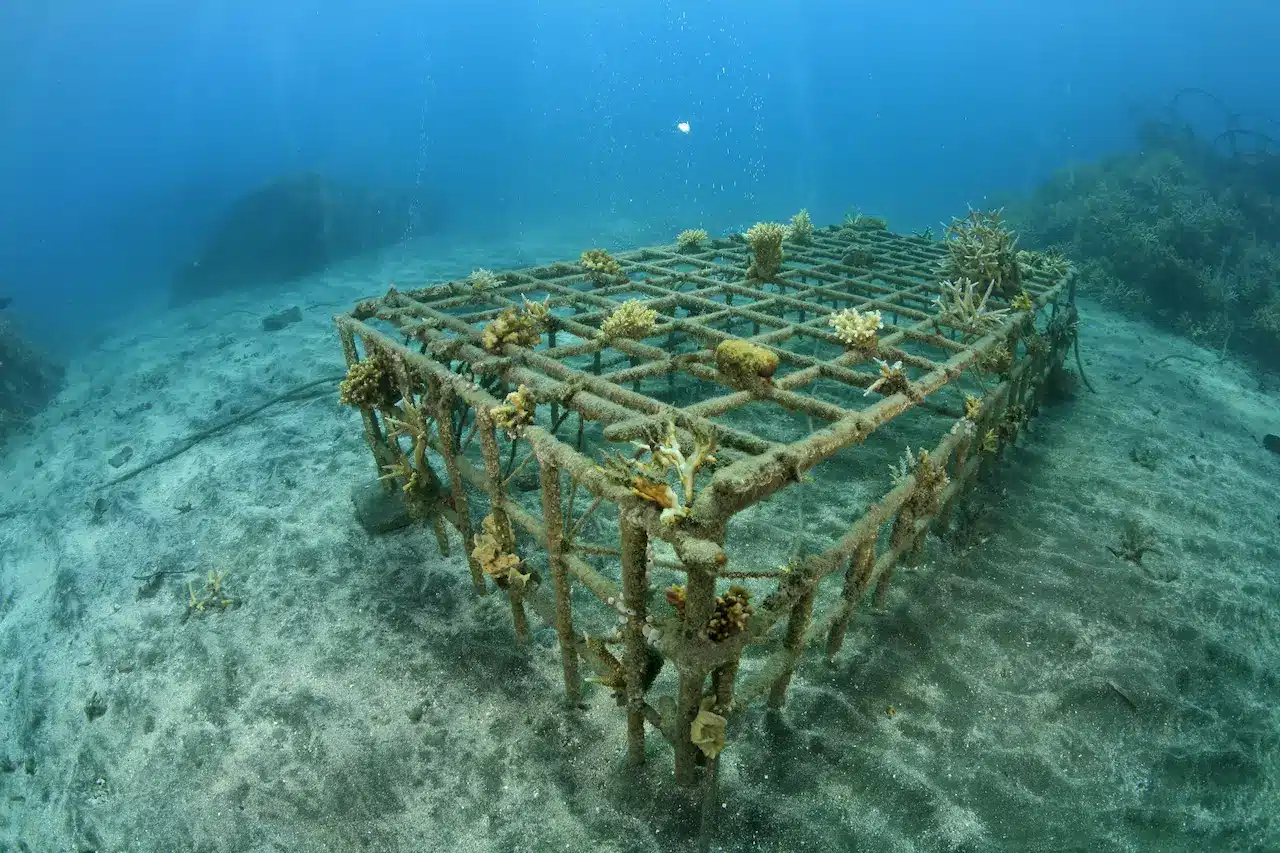
Funding large-scale artificial reef projects
One huge barrier to large artificial reef projects is securing consistent long-term funding. These massive ecosystems require tens of millions of dollars for initial construction and then significant annual budgets for maintenance, monitoring, and management.
Funding options include:
- Government resources and grants for environmental programs.
- Corporate and philanthropic donors want to support conservation.
- Restoration funds from environmental settlements or damages.
- Revenue-generating projects (tourism, aquaculture) that are self-sustaining.
- Private investment vehicles that provide a return through reef credits or benefits.
- Public-private partnerships mix funding sources.
Innovative financing models are needed that tap into both public and private funding globally. Pooling money in large coordinated efforts could mobilize the billions required to meaningfully scale up artificial reef development.
Progress and promise for artificial reefs
While no artificial reef has yet achieved the diversity and complexity of a natural coral reef, we’ve made great progress in recent decades. Here are some encouraging developments:
- Advanced 3d printing can create specialised reef structures with ideal shapes and textures for coral growth.
- Robotic fabrication of reefs underwater avoids damage during placement.
- New coral fragmenting and culturing techniques provide millions of corals to “seed” reefs.
- Genetic research allows selective breeding of more resilient coral strains.
- Transplanting of corals, algae, fish, and invertebrates creates more natural ecosystems.
- Active management and maintenance policies enable rapid responses to threats.
- Monitoring reef function and modifying structures provides important feedback.
With global coordination and adequate funding, these technologies and strategies could scale up to create expansive artificial reef ecosystems. Networks of manmade reefs may one day meaningfully supplement and connect damaged natural reefs.
How Much Does an Artificial Coral Reef Cost?
The cost of installing an artificial coral reef can vary greatly depending on the size, materials used, depth of water, and method of deployment. Some key factors that influence the overall cost include:
Materials
- Concrete – Using precast concrete blocks or shapes is one of the most inexpensive options for small reefs, costing approximately $100-500 per block. For larger reefs with thousands of blocks, the overall cost can be $50,000-$100,000+.
- Steel – Steel structures like decommissioned oil rigs make stable and durable artificial reefs. However, towing and cleaning the structures can cost $1 million or more.
- Plastic – Plastic reef designs are emerging as cost-effective alternatives, though long-term durability is still being researched. Smaller-scale plastic reefs can be created for as little as $5,000.
- Natural rock – Using boulders or other quarried rock can be an expensive material at $100 – $500 per ton. Large reefs require thousands of tons of rock, quickly becoming cost-prohibitive.
Deployment Method
- Manual placement by divers is the most labour-intensive option, but it allows for precise positioning. The cost is around $1,500 per day with a specialised dive team.
- Barges or boats can be used to tow and sink larger structures in a more controlled manner. Barge and tug rental can cost $2,000-$5,000 per day.
- Cranes mounted on barges are the most expensive option, with rental fees of $10,000 per day or more. But they allow full control over submerged structures.
Depth of Water
- Shallow reefs in less than 60ft of water are cheaper to install since divers can handle more of the work.
- Reefs installed at deeper depths over 60ft require more equipment like barges, cranes, robots, etc. Those additional costs can add hundreds of thousands of dollars to the total project budget.
Size of Reef
- Smaller reefs under an acre can be created relatively affordably for $25,000-$100,000.
- Larger-scale reefs measured in acres with thousands of modules can cost upwards of $500,000 to $1 million.
A basic small artificial reef can be created for under $100,000, while large-scale reef systems covering multiple acres with complex materials can cost millions of dollars to construct and install. The local cost of labour, equipment rental, and sourcing materials also contribute to the final price tag.
Do Artificial Coral Reefs Work?
There is some debate around the effectiveness of artificial reefs in restoring coral ecosystems, but evidence shows they can successfully:
Attract Marine Life
- Artificial structures provide hard surfaces for coral larvae to attach and grow on. Porous materials like concrete also encourage growth.
- The nooks and crannies provide shelter for fish, crustaceans, and other organisms to hide from predators and currents.
- Accumulated algae and invertebrates on the structure become a supplemental food source for grazers.
- The congregation of marine life around the reef can aid in larval dispersal between natural reef sites.
- Studies show artificial reefs can achieve 70-90% of the faunal diversity and biomass of surrounding natural reefs within 3-5 years under ideal conditions.
Reduce Impact on Natural Reefs
- By providing alternate sites for snorkelling and diving, artificial reefs help limit traffic and damage to natural reef structures.
- Anglers also congregate around artificial reefs, reducing pressure on overfished natural habitats.
- Well-placed artificial reefs can act as breakwaters, absorbing wave energy and preventing sedimentation that can smother coral colonies.
Enable Coral Transplantation
- Damaged or threatened coral fragments can be transplanted onto artificial reefs for propagation.
- These coral nurseries allow vulnerable species to grow in a protected environment before being reintroduced to natural reefs.
- Additionally, lab-cultured corals can be strategically seeded onto reef structures to boost genetic diversity.
However, while artificial reefs can be engineered to mimic aspects of natural reefs, they do not perfectly replicate the complexity and biodiversity of coral formed over centuries. The success of artificial reefs depends heavily on site selection, materials used, and maintenance.
Are There Any Disadvantages to Creating Artificial Reefs?
While artificial reefs provide many restoration benefits, there are also some potential drawbacks and challenges to consider:
Altering Local Ecosystems
- Poorly planned artificial reefs placed in inappropriate areas can indirectly damage seagrass, sand flats, and other habitats by shifting currents or enabling invasive species.
- Accumulation of excess nutrients around reefs can also contribute to algal blooms and disruption of the food web.
Attracting Invasive Species
- Non-native species introduced through ballast water or other means may colonise and overwhelm artificial reefs.
- Invasive lionfish, for example, have been problematic on artificial reefs in the Atlantic. Mitigation requires consistent culling.
Maintenance Difficulties
- As artificial structures age, degraded blocks or cracked concrete can break off and scatter harmful debris.
- Toxic anti-fouling paints or leaching metals can also contaminate the reef over time.
- Regular cleaning and repairs are challenging deep underwater, often requiring specially trained divers.
Limited Coral Growth
- While artificial reefs attract corralline algae, actual coral growth can be slow compared to natural reef accretion rates.
- The limited calcium carbonate production may not fully replace eroded neighbouring reefs.
- Acidification and warming ocean temperatures strain both artificial and natural reef growth.
When executed thoughtfully, the benefits of artificial reefs likely outweigh the drawbacks. However, site-specific environmental impact assessments help avoid unintended consequences.
How Long Does an Artificial Reef Last?
Artificial reef structures are designed to be long-lasting, but their lifespan depends on the materials used, water conditions, and maintenance frequency. Some general timelines:
Concrete
- With proper construction and curing, concrete blocks can remain intact for 50-100 years.
- Precast concrete shapes with reinforcement steel rods last even longer, upwards of 200 years.
- Concrete slowly degrades through marine growth, corrosion, waves, and storms. Regular cleaning can extend the lifespan.
Plastics
- Many plastics can persist underwater for centuries without breaking down. This durability makes them a favourable artificial reef material.
- However, stability questions remain about certain plastic polymer blends or 3d-printed reef units. Further longevity studies are needed.
Steel
- Due to corrosion, most steel structures like retired oil rigs or decommissioned ships fully deteriorate within 100-150 years.
- Stainless steel components may extend an artificial reef’s duration to 200+ years.
- Shipwrecks from the 18th and 19th centuries are still identifiable artificial reefs after 200+ years.
Natural Rock
- Granite, limestone, and other rock structures are highly stable and can serve as artificial habitats for thousands of years.
- Some rocks may gradually erode and shift from wave action, storms, and bioerosion.
Regular maintenance, like removing problematic sediment, replacing dislodged modules, and cleaning biofouling from block pores, can all help prolong artificial reef lifespan.
Assuming suitable conditions and materials, most modern artificial reefs are designed to persist for a century or more before requiring renewal or restoration. Proper site selection is key for maximising durability.
Can Coral Grow on Concrete?
Coral polyps can colonise and grow on most hard, stable materials, including concrete. Concrete is one of the most widely used substrates for artificial coral reefs. Key advantages of concrete include:
Surface Textures
- The porous surface and crevices in concrete provide handholds for coral larvae to settle on and attach to.
- Rough finishes with exposed aggregate offer the most recruitment points and fastest encrustation.
Alkalinity
- The calcium oxide content of concrete results in a high ph environment favourable to coral growth and skeleton formation.
Configuration Options
- Concrete can be moulded into diverse shapes like blocks, balls, pyramids, or lattices to meet design needs.
- Prefabricated units allow easy transport and on-site assembly into larger reef structures.
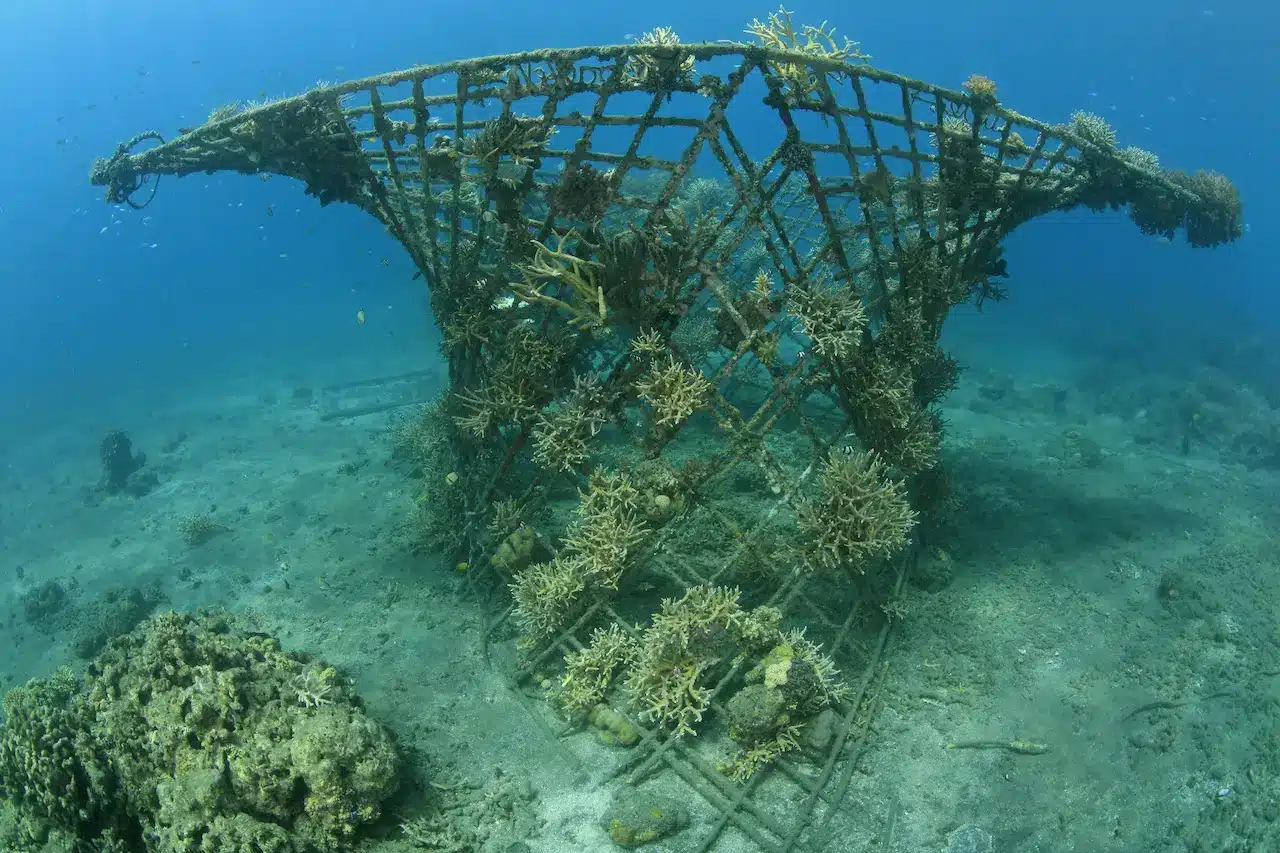
Artificial Coral Reef in the Ocean
Weight
- Significant weight keeps concrete modules stable on the seafloor, even under strong waves and currents.
Durability
- Concrete withstands the marine environment better than other artificial reef materials like wood or steel. A lifespan over 100 years is feasible.
Despite these advantages, some considerations for concrete-based artificial reefs include:
Toxic Leaching
- Trace metals or residual cement washout can leach from concrete and lower local water quality. Only non-toxic mixes should be used.
pH Changes
- As concrete ages and weathers, the ph level slowly drops and may impede skeletal growth after several decades.
Accumulated Sediment
- Cleaning is needed to prevent excessive silt buildup in concrete pores, which can smother establishing coral colonies.
With careful planning and maintenance, concrete offers an affordable, durable, and effective substrate for coral propagation on artificial reefs.
Further advances in concrete technology and reef design will help make artificial habitats viable additions to reef restoration initiatives around the world.
Conclusion
In summary, artificial coral reefs are complex long-term projects but can be an important tool for rehabilitating damaged ecosystems. If thoughtfully sited and constructed, artificial reefs can attract significant marine life, take pressure off of natural reefs, and provide support for transplanted coral fragments.
However, drawbacks like shifting ecosystems, invasive species, and material degradation need to be taken into account. With advancements in materials and best practices, artificial reefs can become more efficient at replicating natural habitats.
When paired with other conservation efforts, these man-made coral structures may help preserve the biodiversity of vulnerable reefs for future generations.

